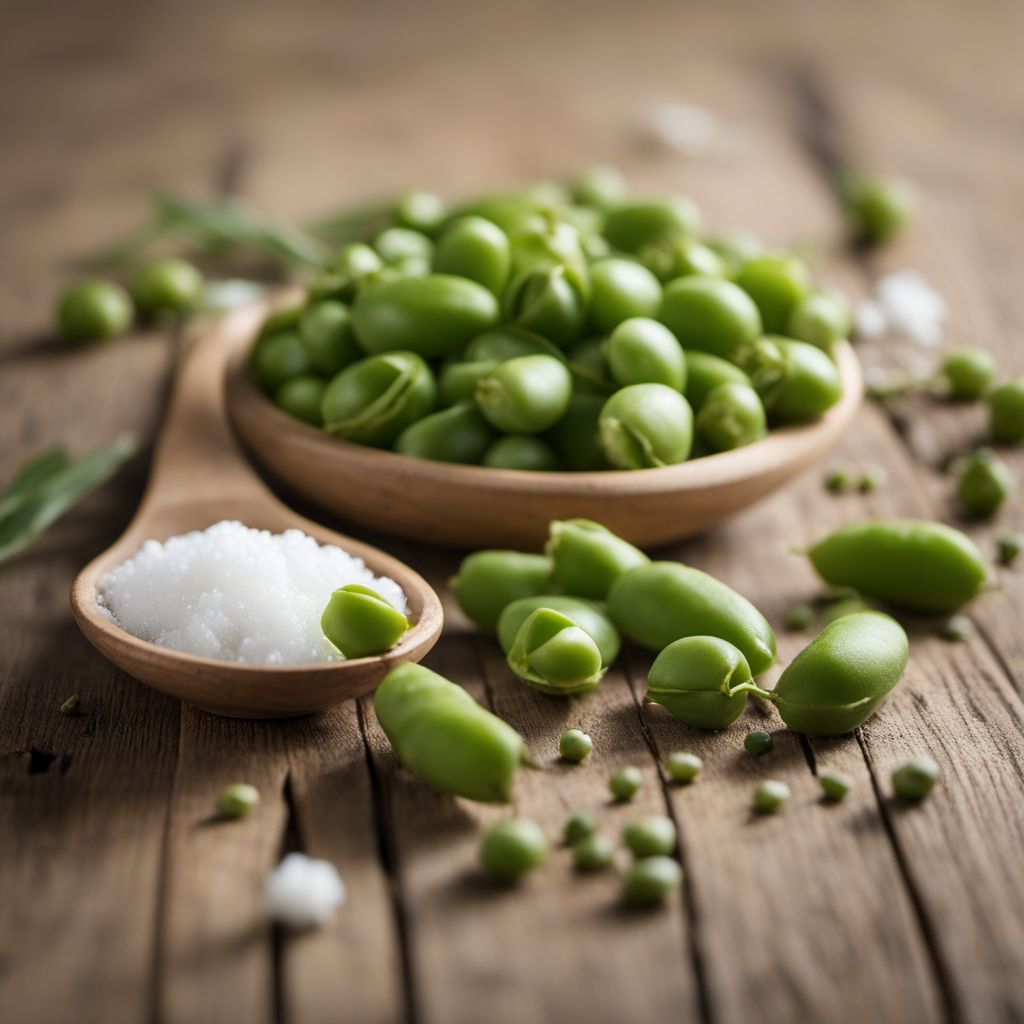
Ingredient
Garden peas (dry)
Versatile Legumes
Garden peas are small, round legumes that are harvested when mature and dried. They have a slightly sweet and earthy flavor with a tender yet firm texture. These legumes are commonly used in soups, stews, salads, and side dishes, providing a good source of plant-based protein and dietary fiber.
Origins and history
Garden peas have been cultivated for thousands of years, originating in the Mediterranean region. They were a staple food in ancient civilizations and played a significant role in their diets. Over time, garden peas spread to other parts of the world and became a popular ingredient in various cuisines.
Nutritional information
Garden peas are a nutrient-dense ingredient, rich in protein, dietary fiber, vitamins A and C, iron, and potassium. They are also low in fat and calories, making them a healthy addition to meals. The calorie content varies depending on the cooking method and serving size.
Allergens
Individuals with legume allergies should avoid consuming garden peas.
How to select
When selecting garden peas, look for dry peas that are uniform in size, with a vibrant green color. Avoid peas that are discolored, shriveled, or have signs of mold. Opt for organic or locally sourced peas whenever possible.
Storage recommendations
To maintain the quality of garden peas, store them in an airtight container in a cool, dry, and dark place, such as a pantry or cupboard. Proper storage helps prevent moisture absorption and prolongs shelf life. Use within a year for the best flavor and texture.
How to produce
Garden peas can be grown in home gardens or small-scale farms. They require well-drained soil, full sun, and regular watering. Plant pea seeds in early spring or fall, providing support for the vines to climb. Harvest the peas when the pods are fully mature and dry.
Preparation tips
Before using garden peas, they need to be rehydrated by soaking them in water overnight or boiling them until tender. Once rehydrated, they can be used in soups, stews, salads, or side dishes. Garden peas can also be ground into flour or pureed for dips and spreads.
Substitutions
Green split peas or lentils can be used as substitutes for garden peas in recipes. However, the texture and flavor may differ slightly. Fresh or frozen green peas can also be used as a substitute, although they have a different taste and texture compared to dried garden peas.
Culinary uses
Garden peas are commonly used in soups, stews, and casseroles, providing a hearty and nutritious addition. They are also used in salads, pilafs, and Indian dishes like dal. In some cuisines, garden peas are ground into flour and used in baking or made into spreads and dips.
Availability
Garden peas are commonly available in grocery stores, supermarkets, and specialty food stores worldwide.
More ingredients from this category
Recipes using Garden peas (dry) » Browse all

Homestyle Pav Bhaji
Spicy and Flavorful Pav Bhaji Delight

Antinaxtes with a Nordic Twist
Nordic-Inspired Antinaxtes: A Modern Twist on a Greek Classic
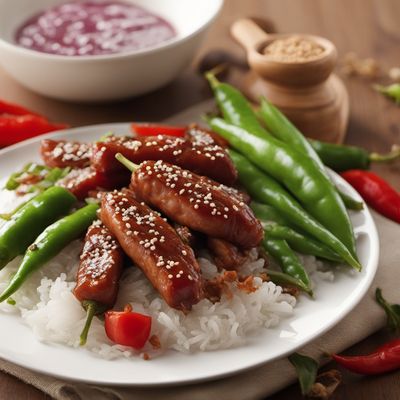
Knack d'Alsace with a Chinese Twist
Chinese-Inspired Knack d'Alsace: A Fusion of Flavors

Nouvelle Ramen
Elevated Ramen: A Fusion of Japanese Tradition and Nouvelle Cuisine

Chicken Vesuvio with Roasted Potatoes and Peas
Sizzling Italian Chicken Delight
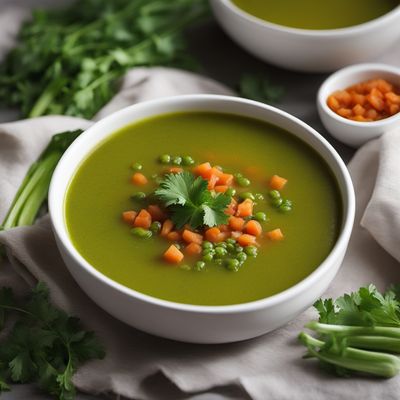
Slovak Split Pea Soup
Hearty Pea Delight: A Taste of Slovakia

Shandong-style Braised Pork with Vegetables
Savory Shandong Pork Medley
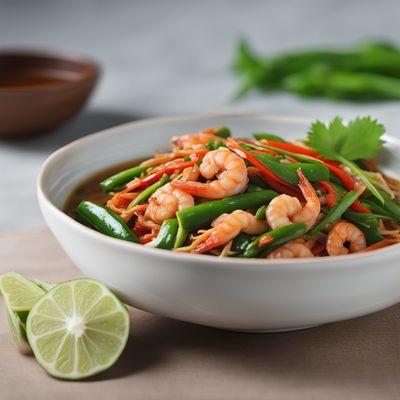
Guangxi-style Fanzelto
Savory Rice Noodles with Guangxi Flair
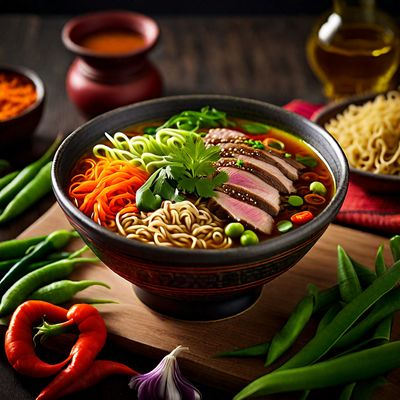
Moroccan-inspired Ramen
Spiced Lamb Ramen with Harissa Broth
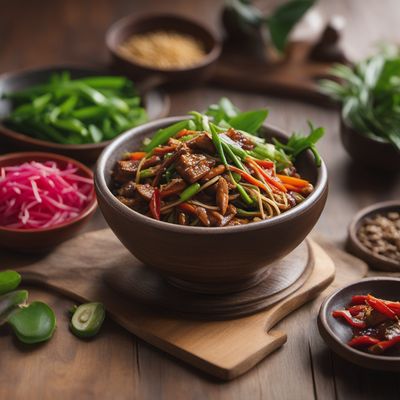
Buddha's Delight
Enlightening Harmony: A Vegetarian Delight

Finanziera alla Moda
Savory Italian Delight: Finanziera alla Moda
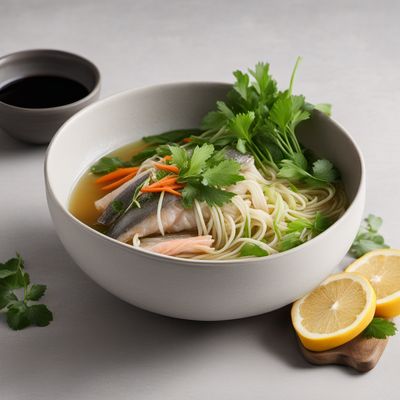
French-style Fish Noodle Soup
Soupe de Poisson aux Nouilles à la Française (French Fish Noodle Soup)